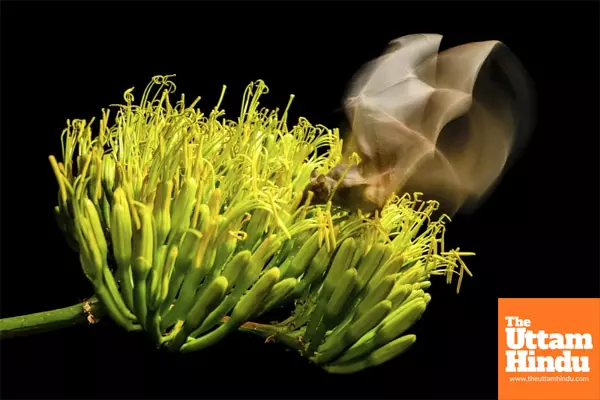
Arizona adds endangered bat to its list of night-flying creatures

New Delhi (The Uttam Hindu): Scientists have long suspected that Mexican long-nosed bats migrate through southeastern Arizona, but solid proof has been hard to come by. Now, researchers have found a way to confirm the bats’ presence by analyzing saliva left behind when they sip nectar from plants and residential hummingbird feeders. Bat Conservation International, a nonprofit focused on preventing bat extinctions, partnered with residents from southeastern Arizona, southwestern New Mexico, and west Texas for a saliva swabbing campaign. The samples were sent to a lab at Northern Arizona University in Flagstaff, where researchers analyzed the environmental DNA (eDNA) to verify that the bats migrate through the region, potentially making it a part-time home. The Mexican long-nosed bat has been listed as endangered since 1988 and is the only bat species in Arizona with federal protection. These bats play a crucial role in pollinating desert plants like cactus and agave.
The discovery was announced in late January by officials from the U.S. Fish and Wildlife Service and the Arizona Game and Fish Department. While expanding Arizona’s bat species list to 29 is exciting, wildlife managers are especially thrilled about the novel, noninvasive method used to confirm the bats’ presence. “If we were trying to identify the species without eDNA, biologists could spend hours trying to catch one of these bats, and even then, it’s not guaranteed,” said Angie McIntire, a bat specialist for the Arizona Game and Fish Department. “Sampling the environment with eDNA gives us an additional tool for our toolkit.”
Each spring, Mexican long-nosed bats migrate from Mexico to the southwestern U.S., following the blooming plants they pollinate. They return to Mexico along the same route in the fall.
Bat Conservation International enlisted local residents to collect saliva samples from bird feeders during the summer and fall. Anna Riley, a microbiology major at Northern Arizona University, extracted the DNA from hundreds of samples. She then ran the samples through machines that could detect the presence of bats. The meticulous process, which took months, involved using a syringe to transfer diluted DNA into tiny vials and placing them into a centrifuge.
“There’s a big database that has DNA sequences of most species, so we could compare our samples to the database,” Riley explained. “It’s a bit like a Google search — you plug in the DNA, and it identifies what species it belongs to.” Kristen Lear, from Bat Conservation International, noted that eDNA has been used successfully to detect the presence of other wildlife. The idea to use it for bats came from the observation that bats often leave saliva on plants and hummingbird feeders. This breakthrough provides a non-invasive way to confirm the presence of the endangered species and continues efforts to protect bats and their role in ecosystems.

